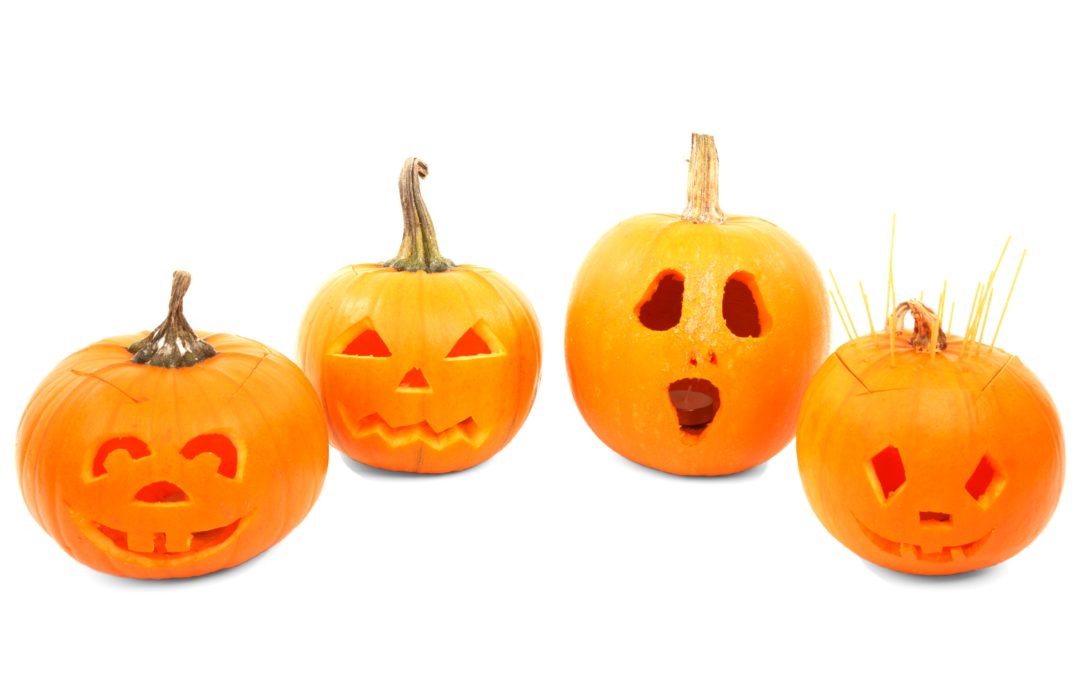
by Lorri | Oct 31, 2018 | UnCorked
The spider webs are tangled, the pumpkins are carved, and our candy dishes are overflowing with chocolate treats. Our house is no different from the average American’s — we celebrate Halloween with treats, costumes and of course, parties.
The National Retail Federation’s 2018 annual survey predicts retail spending for this year’s holiday will be $9 billion.
For many adults, wine is undoubtedly part of the festivities. The following wines not only taste great, but also stick to the eerie theme.
THE VALUES
- 2016 Ghostrunner Ungrafted Red, California (about $16 retail)
- 2016 Charles Smith Velvet Devil Merlot, Washington (about $15 retail)
- 2016 Concha Casillero Diablo Devil Red, Chile (about $14 retail)
- 2016 Apothic Red Crush, California (about $12 retail)
- 2016 Spellbound Petite Syrah, California (about $14 retail)
THE SPLURGES
- 2016 Owen Roe Sinister Hand Red Blend, Washington (about $29 retail)
- 2016 Ghost Pines Winemaker’s Blend Chardonnay, California (about $18 retail)
- 2016 The Divining Rod Cabernet Sauvignon, California (about $20 retail)
- 2016 Bogle Vineyards Phantom, California (about $20 retail)
- 2016 Michael David Freakshow Cabernet Sauvignon, California (about $20 retail)
- 2016 Flora Springs Ghost Winery Malbec, California (about $60 retail)
- 2016 Witchery Oakville Cabernet Sauvignon, California (about $96 retail)
- 2016 Hahn Family Boneshaker Lodi Zinfandel, California (about $20 retail)
- 2016 Klinker Old Ghost Zinfandel, California (about $20 retail)
- 2016 Austin Hope Troublemaker Red Blend, California (about $18 retail)
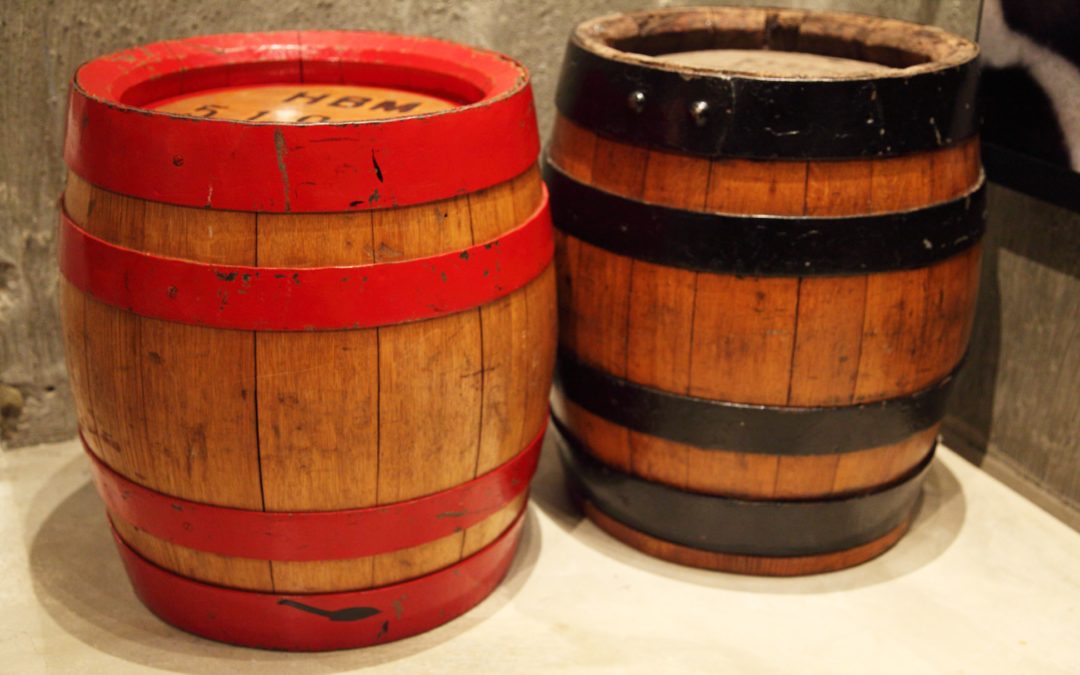
by Lorri | Oct 24, 2018 | UnCorked
Recently, a friend asked me to help her find a wine similar to one she drinks at her favorite restaurant. As always, I start by asking, “tell me what you like about the wine.” She began by saying it was chardonnay — but different from others she had tasted: “It wasn’t sweet, tangy or oaky. It was almost creamy and buttery.” This was an easy one to figure out because chances were she was describing a chardonnay that had undergone malolactic fermentation.
To understand malolactic fermentation, keep in mind the first step in transforming grape juice to wine happens as the sugar is converted to alcohol with the help of yeast. Eventually the step will end because there is no more sugar for the yeast to feed on. This is where “malo” begins. For centuries, it was regarded as one of wine’s unsolvable mysteries. Cellar masters noticed that their wines changed after fermentation into smoother, more full-bodied, supple styles. Because it was a mystery (and obviously technology had not yet caught up), there was no way to control this process.
In the mid-20th century Frenchman Pascal Ribereau-Gayon discovered it was not a mystery at all but the result of secondary fermentation when malic acid is converted to lactic acid. Malic acid is the tart acid in grapes also found in green apples, and lactic acid is the softer creamy acids found in milk, cheese and yogurt. Chardonnay is one of the classic examples of the presence of malolactic fermentation during barrel aging; fuller mouth-feel and creamy texture are a direct result from this method. The buttery taste in many chardonnays is from a component named “diacetyl” that occurs during this process.
A lot of crisp white wines, such as sauvignon blanc, Riesling and gewurztraminer will not benefit from malolactic fermentation. The process is prevented by chilling, filtering or adding fining agents or enzymes. And when a winemaker wants to produce a chardonnay in a crisp fruity style, the process is prevented using one of those methods. Occasionally the two styles are combined with a wine style that has crispness and nuances of butter and toasty oak.
Red wines are generally allowed to go through the malolactic fermentation because otherwise they tend to be harsh and astringent. After the malic acid is converted to lactic, red wines are softer and smoother.
Generally, the smell of vanilla, butter, dill and coconut are attributes from oak aging, but the textures of some chardonnays will be described as creamy, smooth, oily and even waxy. Today’s Value and Splurge are examples of wines benefiting from this process and a little help from barrel.
THE VALUE
- 2016 La Crema Chardonnay, California (about $20 retail)
THE SPLURGE
- 2016 Rombauer Carneros Chardonnay, California (about $41 retail)
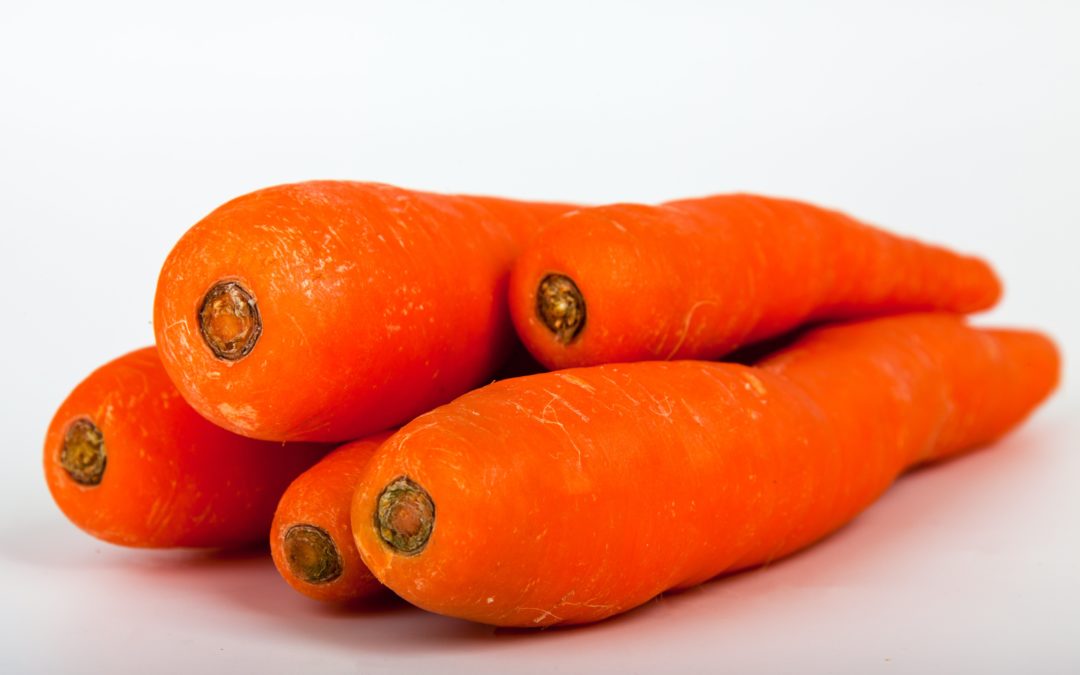
by Lorri | Oct 17, 2018 | UnCorked
I am asked more and more about wine pairing suggestions for vegetarian foods.
When we consider nonvegetarian pairings, the general rules of old are relativity easy to follow: red wine with red meat, white wine with fish. However, vegetarian dishes tend to be a bit more complicated than simply considering the main protein. But if you focus on a few key ingredients and the style of cuisine it’s easy to come up with a delicious wine match.
CONSIDER THE PROTEIN
What kind of protein does the dish include? It isn’t uncommon these days to find plant-based proteins masquerading convincingly as meat. I recently attended a dinner party where the hostess had prepared a plant-based sausage pizza paired with a nice Chianti. The pizza’s taste was so convincing as real sausage one guest was upset.
In the case of faux meats, use the general pairing guidelines of meats with more weight with red wine. For lighter proteins, such as tofu or plant-based “fish” white wine may be a better match.
THE VALUE
- 2016 Voga Pinot Grigio, Italy (about $12 retail)
THE SPLURGE
- 2016 Broadside Wild Ferment Chardonnay, California (about $16 retail)
WHEN VEGETABLES STAR
Is there one vegetable that dominates the dish? Many vegetarian dishes will have a vegetable as the star ingredient. These are a few safe pairings to use for some of the key vegetables used in many dishes: mushrooms and pinot noir, eggplant and cabernet sauvignon, potatoes or risotto and chardonnay, and roasted vegetables and merlot.
THE VALUE
- 2016 Bogle Vineyards Merlot, California (about $12 retail)
THE SPLURGE
- 2016 Sean Minor Pinot Noir, California (about $20 retail)
GLOBAL FLAVORS
Is the recipe based on the cuisine of a specific country or region? This is an easy pairing because you can generally go back to the basic rule of pairing food and wine from the same region. Italian food with Chianti or pinot grigio, tapas with garnacha or albarino. It gets complicated when the cuisine doesn’t have a corresponding wine as is the case with Chinese, Thai, Indian and Mexican. In these examples, think of the spices and look to wines that play well with spicy foods such as Riesling, gewurztraminer or chardonnay.
THE VALUE
- 2016 Los Rocas Garnacha, Spain (about $14 retail)
THE SPLURGE
- 2016 Trimbach Gewurztraminer, France (about $30 retail)
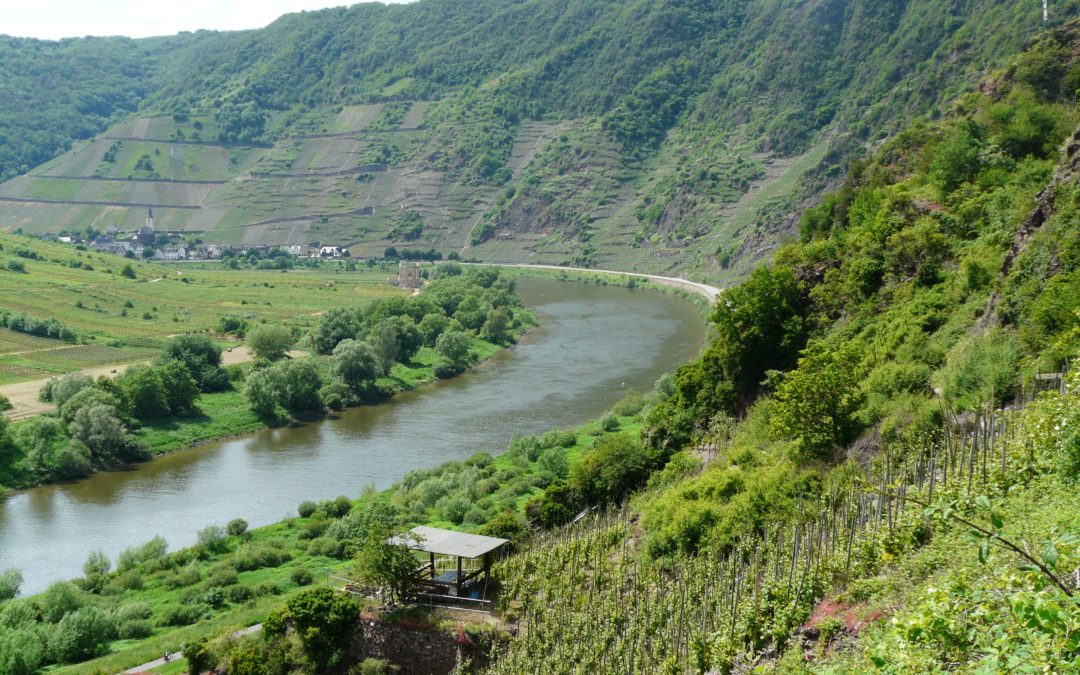
by Lorri | Oct 10, 2018 | UnCorked
The Cote Rotie is home to some of the world’s most sacred syrah wines. Nicknames for the Cote Rotie, the “Roasted Slope” and the “Burnt Hillside,” conjure imagery of the dark, intense wines this region produces. This region’s wine production dates to the first century.
The hillside vineyards are some of the steepest in France; in some places the incline is as much as 55 degrees making them difficult and expensive to upkeep and harvest. However, the hillsides’ steep angle toward the southeast offer the vineyards the ideal amount of sunshine from sunrise to sunset, letting the grapes ripen slowly and evenly.
Two slopes, the Cotes Brune and Blonde are two adjacent hillsides and the most famous of the Cote Rotie’s vineyards. The story of the “Brune” and the “Blonde” is an oft repeated legend in the region. A powerful aristocrat named Maugiron is said to have withdrawn to a chateau and gave his land to his two daughters, both incredibly beautiful; one with fair golden hair and the other with dark long locks. The legend does not tell why he bequeathed the two slopes to his daughters; some historians say kindness, while others argue he did it to evade his tax commitments. The slopes were christened according to the color of the girls’ hair “the blonde being bright and lively when young, but fading quickly, the brune starting off quiet and reserved, but growing into a splendid eminence.” The legend illustrates the distinct differences in the styles of the two wines.
Syrah is the only red wine grape allowed the designation of Cote Rotie; blends may contain up to 20 percent viognier.
THE VALUES
- 2017 Dom de Couron Cotes du Rhone Rouge, France (about $12 retail)
- 2017 Terres D’Avognon Cotes du Rhone, France (about $15 retail)
- 2017 Chapoutier Belleruche Cotes du Rhone, France (about $13 retail)
- 2017 Paul Jaboulet Aine Parallele 45 Cotes du Rhone, France (about $14 retail)
- 2017 Les Garrigues Red Table Wine Cotes du Rhone, France (about $15 retail)
THE SPLURGES
- 2017 Brunel Cotes du Rhone Rouge, France (about $18 retail)
- 2017 E. Guigal Cotes Du Rhone, France (about $19 retail)
- 2017 J. Vidal Fleury Cotes du Rhone Blanc, France (about $16 retail)
- 2016 Domaine Raymond Roure Crozes Hermitage, France (about $42 retail)
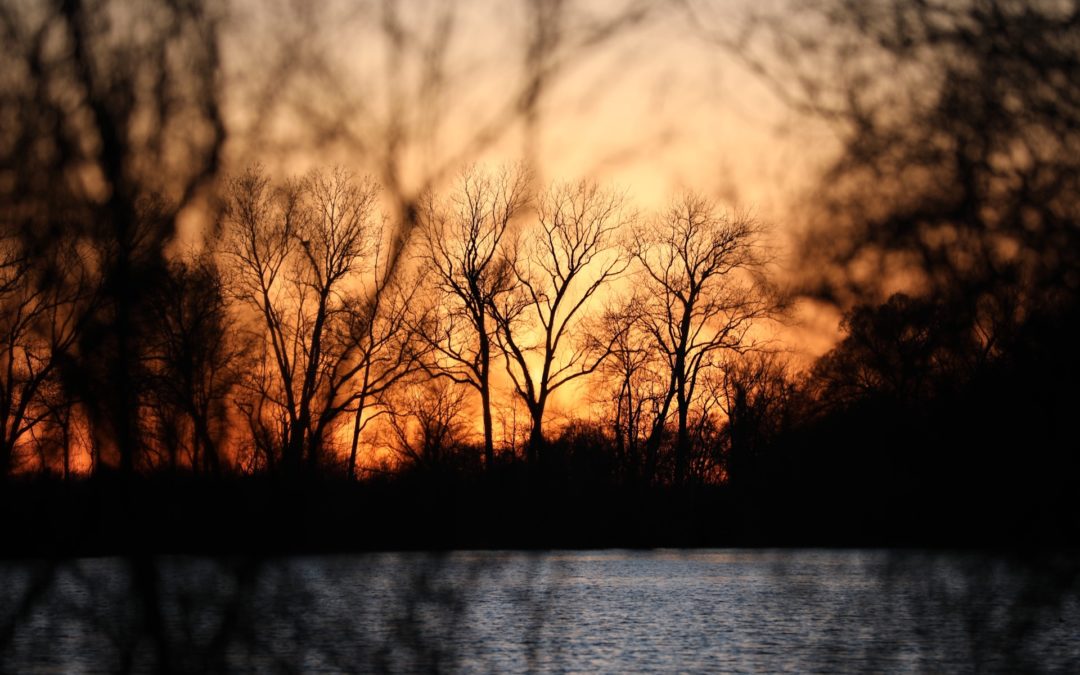
by Lorri | Oct 3, 2018 | UnCorked
One of my favorite events of the year, when wine lovers can explore hundreds of wines under one roof is the American Heart Association’s annual Festival of Wines.
This year’s event is 6 p.m. Thursday at Dickey-Stephens Park, 400 W. Broadway, North Little Rock.
The Festival of Wines is the largest wine festival in central Arkansas, offering several hundred wines from all corners of the wine world.
One of my favorite features is the unique location of the “patio party” — encompassing the entire Dickey-Stephens Park concourse surrounding the stadium. Not only is it a wine-tasting mecca but the festival offers exceptional cuisine from many of our best restaurants in central Arkansas. For more information about the event, visit arkansasonline.com/1003wine.
I was able to get a sneak peek at this year’s wines. This is an opportunity to taste many wines we enjoy and also explore new tastes. Take time at the event to find some of the grape varietals, regions and styles that are not part of your normal buying routine.
Here are some to keep an eye out for as you explore the vast array offered at the festival.
THE VALUES
- 2016 Matchbook Dunnigan Hills Chardonnay, California (about $14 retail)
- 2017 Picos del Montgo Garnacha, Spain (about $12 retail)
- 2016 Gnarly Head 1924 Cabernet Sauvignon, California (about $11 retail)
- 2016 Llama Old Vine Malbec, Argentina (about $14 retail)
- 2017 St. James Peach, Missouri (about $11 retail)
- 2016 Abbeycourt Cotes Du Rhone Rouge, France (about $14 retail)
- 2017 Charles Smith Eve Chardonnay, Washington (about $15 retail)
- NV Zonin Prosecco, Italy (about $15 retail)
THE SPLURGES
- 2017 Chamisal Stainless Chardonnay, California (about $19 retail)
- 2016 Tosalet Priorat, Spain (about $28 retail)
- 2016 Chateau Smith Cabernet Sauvignon, Washington (about $22 retail)
- NV Moet and Chandon Imperial, France (about $72 retail)
- 2017 Saracco Moscato d’ Asti, Italy (about $19 retail)
- 2017 Left Coast Truffle Hill Chardonnay, Oregon (about $25 retail)
- 2016 Axel Cabernet Sauvignon, Chile (about $25 retail)
- 2016 Gran Pasas Monastrell, Spain (about $17 retail)
- 2017 Zaccagnini Cerasuolo Rose, Italy (about $18 retail)
- 2016 Maddalena Cabernet Sauvignon, California (about $21 retail)

by Lorri | Sep 30, 2018 | Blog
A few years ago, I became zealously interested in different aspects of coffee beans after a trip to Costa Rica. I began discovering more and more distinct characteristics in the many growing areas and roasting methods of coffee beans around the world.
With this new found love, the coffee beans led me to another discovery. Not all home coffee makers are one and the same. After many attempts for a perfect cup brewed like many of the coffees we had tasted around the world, my husband finally found the answer to my dilemma – the Technivorm Moccamaster.
Many machines we bought were an added complexity to my morning routine with the buttons, settings, digital displays of many machines. The Technivorm Moccamaster has a simple design with the water and coffee ground locations. Then with just a flip of the switch, the perfect brew starts dripping.
I like to share my mornings with my husband and not rush, so the 8 to 10 cup carafe was ideal compared to many presses only offering a few cups. Not only do I have an effortless process for preparing my cup of coffee, but the taste allows me to savour in the many complexities of coffee aromas and taste intended.





